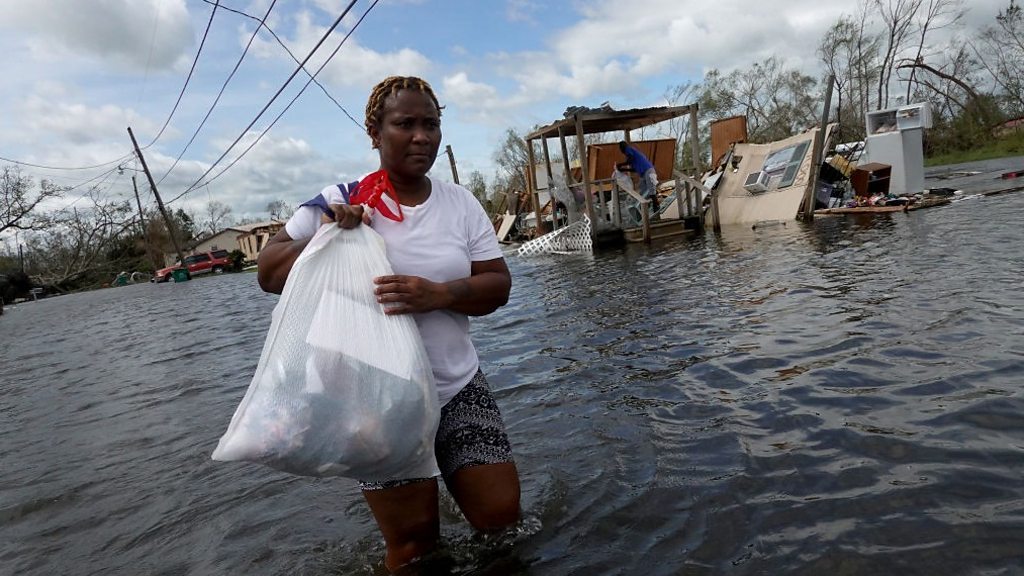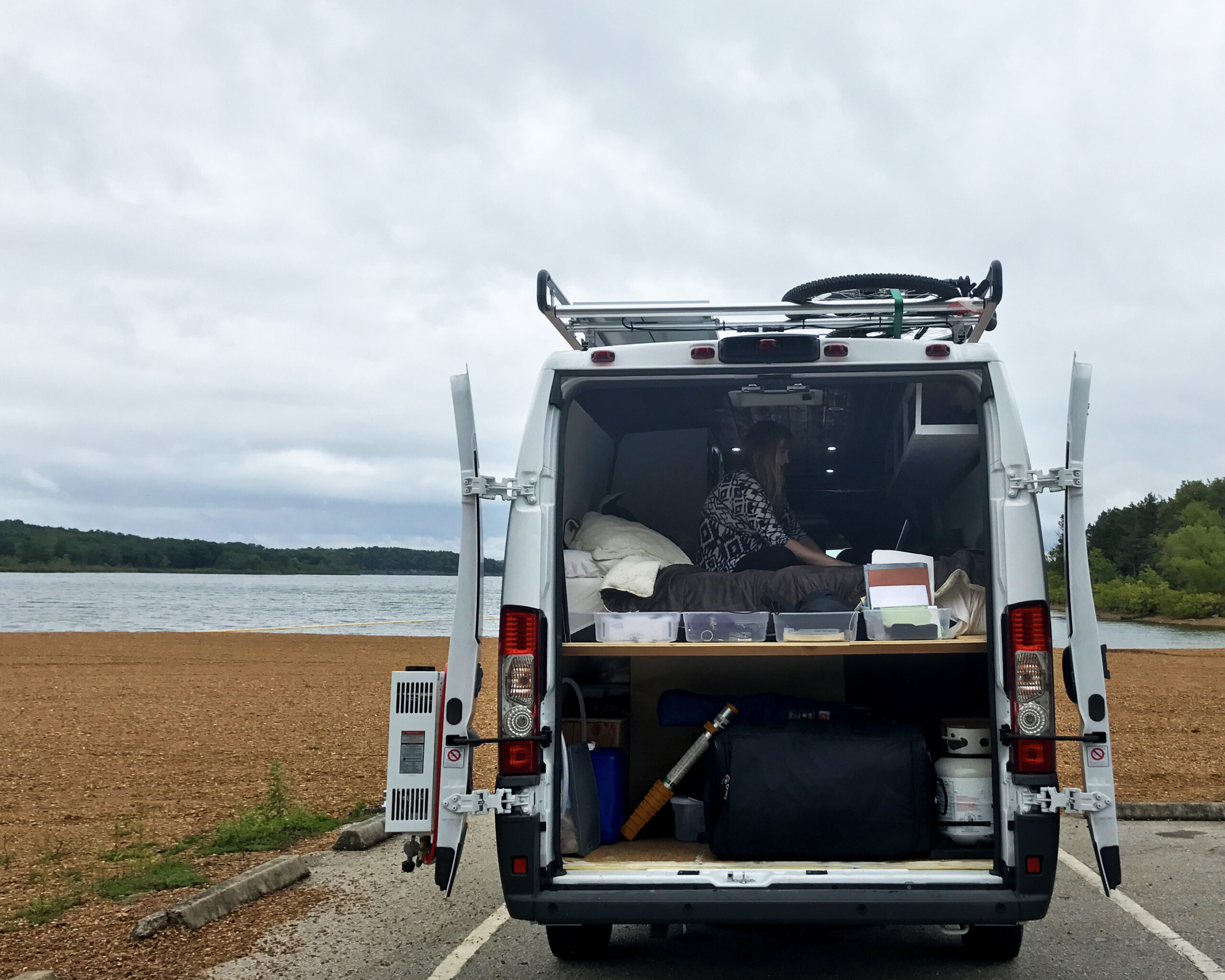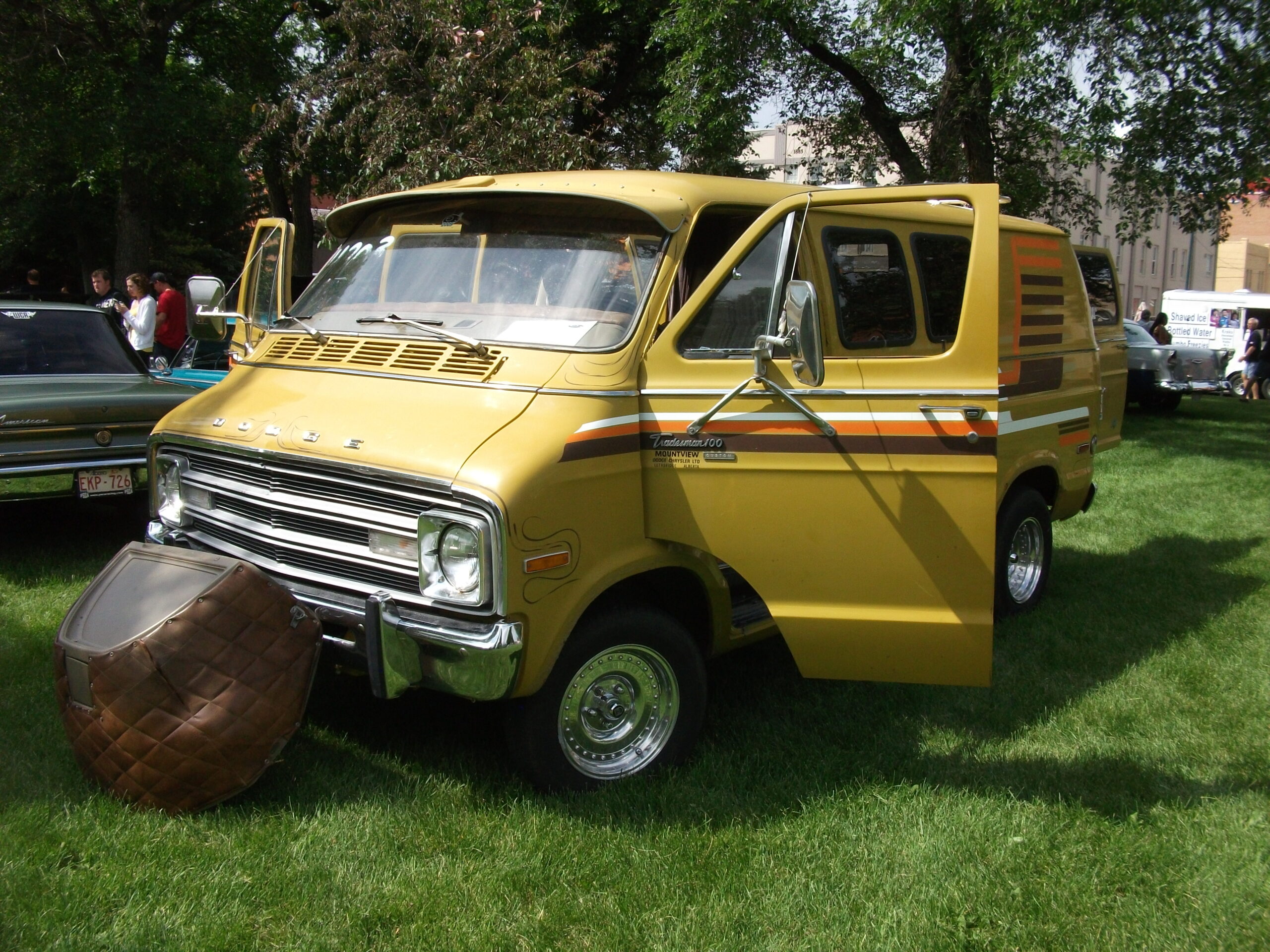
Hurricane Ida, August 2021.
Problem
New Orleans has seen some of the most costly storms of the twentieth century: Hurricane Betsy in 1965, Camille in 1969, Katrina in 2005, and the hit by Ida in 2021. Ida’s touchdown racked up an $80 billion bill, and the losses caused by Katrina took almost $190 billion to recuperate. While those numbers may account for the reconstruction of New Orleans ‘brick-by-brick’, a heavier emotional cost is placed on the city’s low-income residents of color, who suffer disproportionately from mental health issues as a result of these recurring natural disasters.
“Victims of national disasters often experience trauma that can lead to psychological disorders such as post-traumatic stress disorder, anxiety, depression, and substance abuse. Katrina and its aftermath left whole communities particularly vulnerable to such psychological disorders,” writes American Psychological Association’s Rhea Faberman, “not only because of the ongoing stress and upheaval of the storm, but also because of the challenging circumstances that many storm victims lived with before Katrina.”
“We could see the waterline on houses, and rooftop signs with ‘Please help us,’ and that big ‘X’ where dead bodies were found,” recounts New Orleans native Brandi Wagner, “I started sobbing and couldn’t stop. I was crying all the time, just really losing it.” Her problems persisted post-storm. The depression and anxiety she developed as a result of her traumatic experiences led to substance dependence as a way to alleviate the pain Katrina left in her wake. Wagner was able to find treatment to support her issues, but many others are not.
“On a blue sky day, our mental health resources are stretched,” says psychiatry researcher Carol North. Only 22 of 196 New Orleans psychiatrists continued to practice after their return from Katrina’s mass displacement. Health care officials and residents alike suffered from PTSD, anxiety, and depression as a result of the storm. Left untreated, this sort of complex traumatic stress can lead to long term physical health issues like hypertension, diabetes, and heart disease. Past mental health initiatives like Louisiana Spirit covered some ground by contacting hurricane survivors about ‘crisis counseling’, but ultimately many residents who suffered doubly from the stress of the disaster did not receive help, as their needs were considered to be a continuation of care for pre-existing psychological issues.
For low-income residents of New Orleans, the combination of sparse mental health resources and an abundance of potentially traumatic storms make for a dangerous pair. Residents felt a familiar pain after Hurricane Ida hit on the 16th anniversary of the city’s most devastating storm. “All of that put people right back to Katrina,” says Tulane professor of psychiatry Dr. Denese Shervington, “…It’s an old wound that has not healed and added new trauma to those unhealed parts of our psyche”.
Clinical psychologist Sarah Lowe claims that the blunt force of secondary traumas during evacuation and rebuilding processes are comparable to the effect of piling concussions on the human brain. Following Hurricane Katrina, residents were hit by Rita, Gustav, and Ike — all in the span of 3 years.
Hurricanes are the only natural part of the many disasters thrust upon low-income residents of color in New Orleans. In 2021, census data shows that 23.8% of New Orleans still lives below the poverty line, and 69% of families of color lack the savings necessary to support them in an emergency. Most New Orleans-based private practice therapists charge between $120-150 per session, while 33% of black households in New Orleans have a zero net worth. The cost for peace of mind is clear: access, as always, belongs to those who are white enough and/or rich enough to afford it.
The Lower Ninth Ward is an example of what happens when unnatural disasters collide with the chaos of Mother Nature. Before Katrina, ⅓ of the majority-black ward’s residents already lived below the poverty line. “Since the storm was at the end of the month and many low-income residents of New Orleans live from paycheck to paycheck,” writes Elizabeth Fussell, “economic resources for evacuating were particularly scarce.” After the storm, only 36% of the population returned — or rather, were able to return. Many who did were still denied the Road Home payments that were supposed to aid New Orleans homeowners in reconstructing their properties. “The first FEMA trailers didn’t arrive in the area until around June,” writes Gary Rivlin in his article about the lasting destruction in the Ninth Ward, “more than six months after people in other communities got theirs, allowing them to start working on their homes.”
Evacuation for upper and middle-income New Orleanians was a simpler story: they booked tickets, packed cars and made hotel reservations, or visited with out-of-town relatives. Those with the means to were the first to leave and first to return, with the city’s white population having a return rate of about 70% post Katrina.
More than a fifth of Louisiana residents remain in need of mental health care, but only 15% of them are able to get adequate treatment. 90% of those patients who experienced Hurricane Katrina still suffer from storm-related disorders, reports Jefferson Parish Human Services Authority’s chief psychiatrist, Thomas Hauth. The trauma they experienced carries on into each hurricane season; the mental aftermath causing them disillusion with half-full communities, a city divided by a racial wealth gap, and a government whose faults cost them everything.
“I told him I think it would be a mistake to rebuild the Ninth Ward,” said Alphonso Jackson, Bush’s Secretary of Housing and Urban Development, after meeting with then New Orleans Mayor Ray Nagin post-Katrina.
Hilda Young, an administrator in the Orleans Parish School District remembers realizing why she wasn’t finding support in her brigade to reopen schools in the Ninth Ward, “Their attitude was, ‘The mayor is going to green-space the neighborhood anyway.’”
“They never wanted us to come back,” shares Lower Ninth native, Henry Irving.
What choice do low-income residents of color in New Orleans have when every helping hand retracts? When both natural and unnatural disasters construct a constant, anxiety-inducing threat to their livelihoods?
Are they forced to stand their ground and fight against all the odds?
Or can they go?
Solution

Ram Promaster 3500 Converted for dwelling. Photo by: Budenhob
Congratulations! Your van life is officially in motion. From now on, your only goal will be to move far away from the status quo cocoon you shed. You know — the good ol’ days of 50+ hour work-weeks spent unengaged behind a desk, still stressed about bills and fed up with rampant social injustice. You weren’t alone in your turmoil: 61% of Americans distrust the federal government’s handling of domestic issues, and 70% wish to acknowledge inequality in the workplace. Fret not: the stillness of the status quo is now a distant remnant of your past. The future is decked with autonomy, some hard work, and a bunch of scenic camping spots you’ll find on FreeRoam.
Everything is different when you’re on the move. “For those dedicated to it,” says van-life blogger Brandon Withrow, “van life is a complicated mix that includes a daily frustration with the simplest of things, while also providing opportunities for personal discovery, community building, and activism.”
Though she loves the lifestyle, van-life veteran Emily R is clear about it not being cut out for everyone: “Just like in a ‘normal’ home, things can go wrong – vehicles break down, you get leaks and flat tires and some mornings you wake up and the water pump has mysteriously decided to stop working. Or the heater’s stopped for no apparent reason. You have to find ways to fix them and if you can’t do it yourself (or bodge it with tape and WD-40) then it’s going to get costly.”
Van life is not an escape from work. Nomadic living is born out of a desire for fulfillment — not ease. A 2016 Forbes survey lists humanity’s biggest desires alongside their biggest obstacles; happiness, money, and freedom were among the top wants of those surveyed. The list of challenges was lit up by questions of purpose, fulfillment in work, potential, and having “something to offer”. Recent surveys show that close to 60% of Americans feel distant from their peers and family, with many citing long work hours as the cause of their isolation. Lack of social connectedness can lead to lowered self-esteem and exacerbates the distress of existing mental health issues.
Van-lifer Kadedra Holmes, keen to the isolating experience of being black in a racist America, created Black Nomads Meet as a way to connect with other black van-lifers while on the move. “I think our society makes us forget who we really are,” shares Holmes, whose ultimate goal is to normalize alternative ways of living for people of color.
The cages of capitalism are all around us. The average American is burdened by $96,371 in debt and many only have an eighteenth of that amount in savings. Over half spend more than 40 hours a week toiling to make up the difference, and nearly 85% report feeling unhappy at work. The stress, the pressure, the excess of material and absence of purpose – all of it reinforces the walls of disillusion that so many people struggle with everyday.
Van-lifers are usually forged from two different fires: those like Holmes looking for alternative lifestyles, and those forced into it by unexpected life costs, natural disasters, and pandemics. On the precipice of the pandemic, the population of digital nomads grew by 49%. A recent survey showed that 72% of Americans would try out van life if it meant they could pay off their debt. “We’re extremely happy in this life and the freedom it gives,” says van-life patron Smriti Bhadauria, who took off from Toronto in 2020.
Stevie Trujillo was a young UCLA graduate with a resume chock full of awards from her corporate tech-sales career when the Great Recession of 2008 forced her to renovate her life, determine what she could sacrifice, and pack the rest into a van. With bittersweet liberty thrust upon her family by economic turmoil, Trujillo was faced with a harsh yet meaningful new reality. “Though it was sometimes terrifying to feel so exposed,” Trujillo says, “like when soldiers in balaclavas searched our van for drugs at military checkpoints, or when we were confronted by heavily armed narcos at a gas station in Honduras – mostly I appreciated the way our vulnerability put us in the way of strangers, seeding connection and a wider sense of belonging.”
A 2021 survey found that the global standard for happiness was determined by whether an individual had three things: health, family, and a sense of purpose. So, you choose: you can put the keys to your fulfillment – your wellbeing, community, and purpose – in the hands of historically unequal and prejudiced socioeconomic systems, or you can put them in the ignition and go.

“Dodge Tradesman 100 Van” by dave_7 is licensed under CC BY 2.0.
Connection
When low income residents of color return to New Orleans after a storm, they may get back their homes but they’re never returned their peace of mind — that luxury remains designated for the rich. Communities of color are expected to deal with the burden of interlocking traumas of oppression and disaster whilst rebuilding their lives. All that seems to withstand the storm is the systems which historically divide the city into two halves: rich and white, poor and black. No force — of nature or of man — has yet been capable of tearing down those structures of division. The only other option left is to go around.
Van life presents those who receive the brunt end of New Orleans’ disasters (natural and unnatural) with the opportunity to maintain their property and their mental health.
A single person living in New Orleans is estimated to have at least around $1,200 a month in expenses, not including rent which is on average $1,300 a month for an apartment. Van-lifers generally spend around $900-1,500 monthly, which reduces the cost of living in New Orleans almost 50%. The remaining amount is more than enough to receive care at least 2-3 times a month from a qualified mental health professional. It’s also normal for van-lifers to bring in additional income by finding seasonal work and side-hustles easily thanks to the mobility of their lifestyle.
The chaos of mass displacement would no longer have the power to derail your life. Whether you’re living in New Orleans or evacuating for a storm, nomad apps like iOverlander will help you find plenty of safe (and free) campgrounds, lots, and national parks to park your new home overnight. The adaptability of van life makes it a particularly viable option for New Orleans residents, who may find themselves needing to pack up and evacuate in a matter of hours. Living as a nomad will allow you to protect your belongings and still maintain your safety in the event of a storm. Where you go, so will your property.
“The liberation I felt with physically downsizing, popping my stuff into storage and then renting my house, was BEYOND WORDS,” shares van-lifer Jenny Lincoln, whose found her own low-cost liberty after being on the road for 6 ½ years, “…I was no longer defined by what I had or had not!”
The inherently alternative nature of van-life solidifies its status as an act of resistance. 64.5% of residents are unsatisfied with the direction of the city’s politics, and the impact of New Orleans’ racist history remains evident today. Van-lifer Stevie Trujillo says her family began to “re-examine [their] own hidden beliefs about people thought to be worth less because they earn less, people criminalized by city ordinances for being poor”.
There is a cost to poverty in New Orleans, and when waters rise during hurricane season that bounty is placed on the mental wellbeing of low income communities of color. Van life can be a way for the city’s overlooked populations to reclaim their freedom, safety, and fulfillment. No longer completely bound by the will of the city’s discriminatory systems, you can do more than just struggle to survive in the Big Easy.
By no means will it be an easy decision to transition into van life. It’s gonna take more than just an indie Pinterest board full of aesthetic converted van pictures and a few videos of travel vlogging van-lifers like Eamon and Bec to get you inspired enough to jumpstart your life on the road. It’ll even take more than reading an article about why it would work.
First, you’re gonna have to get mad: real mad. You’re going to have to get fed up with watching the inequality in this city exceed the national average year after year. New Orleans may not be willing to make a change, but you’ll have to decide whether or not you are.
 NOLAbeings Multimedia artist Claire Bangser created NOLAbeings as a portrait-based story project that marries...
NOLAbeings Multimedia artist Claire Bangser created NOLAbeings as a portrait-based story project that marries...  Voodoo in New Orleans: Reviving history: New Orleans fortune telling This article takes a deep dive into the history of Voodoo in New Orleans, its hybridization with Catholicism, and its present-day place in the city's culture. The author visits fortune-tellers in the French Quarter, using their guidance as a tool for introspection rather than a deterministic predictor of the future. Through her experiences in New Orleans, the author feels a mystical connection to both the past and the future.
Voodoo in New Orleans: Reviving history: New Orleans fortune telling This article takes a deep dive into the history of Voodoo in New Orleans, its hybridization with Catholicism, and its present-day place in the city's culture. The author visits fortune-tellers in the French Quarter, using their guidance as a tool for introspection rather than a deterministic predictor of the future. Through her experiences in New Orleans, the author feels a mystical connection to both the past and the future. 